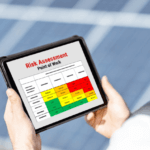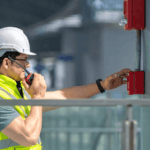
Simplifying Job Risk Assessment in Permit to Work Systems
What is Job Risk Assessment?
Job Risk Assessment is a critical step in ensuring workplace safety, particularly in environments with high-risk activities. This process is at the heart of the Permit to Work system, serving as a key tool in identifying and mitigating potential hazards before any work begins.
Essentially, Job Risk Assessment is like preparing for a journey. Before embarking, we plan the route, inspect our vehicle, and gear up for any possible emergencies. Similarly, this assessment involves a thorough examination of the task at hand, pinpointing risks, and developing strategies to manage or eliminate them. It’s a proactive measure, not just a formality, ensuring that safety is not compromised.
In industries where each job comes with its own set of challenges, a comprehensive Job Risk Assessment is indispensable. It goes beyond simply spotting dangers; it’s about deeply understanding these risks and having a clear plan to handle them safely.
Let’s explore the fundamental components of Job Risk Assessment.
Key Elements of Job Risk Assessment
The effectiveness of Job Risk Assessment in Permit Management hinges on several key elements. These components work together to ensure a thorough evaluation of workplace risks.
- Hazard Identification: This is the first step where potential hazards associated with a job are identified. It involves a detailed examination of the work environment and the tasks involved to spot anything that might pose a risk.
- Risk Analysis: Once hazards are identified, the next step is to analyze the level of risk they present. This includes understanding the likelihood of the hazard causing harm and the severity of the potential outcomes.
- Control Measures: After analyzing the risks, appropriate control measures are determined. This involves deciding on the best ways to eliminate or reduce the risks to an acceptable level. It could include safety equipment, training, or changes in work processes.
- Documentation and Communication: Recording the findings and the action plan is crucial. It ensures that everyone involved is aware of the risks and the measures in place to manage them. Effective communication is key to ensuring that the risk assessment is understood and followed.
Each of these elements is vital in creating a robust Job Risk Assessment, integral to the Permit to Work system.
Integrating JRA with Permit to Work Management
Integrating Job Risk Assessment seamlessly into Permit to Work Management is essential for ensuring workplace safety. This integration allows for a systematic approach to evaluating and managing risks associated with specific jobs. In this process, the assessment’s findings directly influence the issuance and details of work permits.
When a Job Risk Assessment is completed, its outcomes inform the permit issuance process. The permits detail the necessary safety measures and conditions under which the work should be conducted. This ensures that all potential hazards are addressed before work begins, and that workers are aware of the precautions they need to take.
The integration also means that any changes in work scope or conditions can trigger a re-assessment of risks. This dynamic approach helps in adapting to new hazards and ensures continuous safety management. In this way, Job Risk Assessment becomes a living document, evolving with each task and contributing to a safer work environment.
Best Practices for Conducting Effective JRA
For Job Risk Assessments to be effective, certain best practices should be followed:
- Inclusivity: Involve employees who perform the tasks in the risk assessment process. Their firsthand experience provides valuable insights into potential hazards and effective control measures.
- Regular Reviews: Risk assessments should not be a one-time activity. Regular reviews are necessary to address changes in work processes, environment, or technology.
- Simplicity and Clarity: Keep the assessment simple and understandable. Avoid technical jargon to ensure that all employees can comprehend the risks and precautions.
- Actionable Outcomes: Ensure that the findings of the assessment lead to actionable steps. It’s not just about identifying risks, but also about outlining clear, practical measures to mitigate them.
- Training and Communication: Provide adequate training based on the assessment findings. Clear communication about risks and control measures is crucial for ensuring compliance and safety.
Adhering to these practices ensures that Job Risk Assessments are not just a procedural formality, but a meaningful tool in enhancing workplace safety.

Ramesh Nair is the Founder and Principal Partner of Niyati Technologies, the company behind Safetymint.
He’s a dedicated advocate for workplace safety. Ramesh firmly believes that every individual deserves to return home safely after a day’s work. Safetymint, the innovative safety management software, emerged from this conviction. It’s a platform designed to streamline safety management, empower safety professionals, and enhance safety in workplaces.
Through his blog, Ramesh shares insights, best practices, and innovative solutions for workplace safety. Visit his social media profiles to follow him for regular updates.



